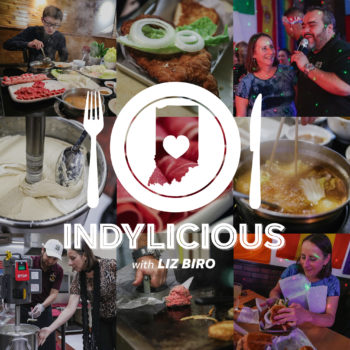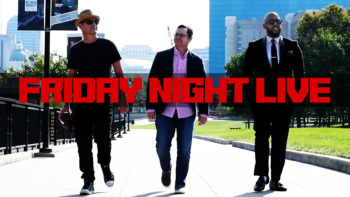How the Indianapolis Star’s multimedia project playbook helped earn nearly $100,000 in sponsorships
Clark Wade and Liz Biro, Indianapolis Star,This is a series on Better News to a) showcase innovative/experimental ideas that emerge from the Knight-Lenfest Newsroom Initiative and b) to share replicable tactics that benefit the news industry as a whole. This “win” comes from IndyStar.com multimedia manager Clark Wade and former food writer Liz Biro. The Indianapolis Star participated in the Knight-Lenfest major market program in 2019.
Question: What problem were you trying to solve, and why was solving the problem strategically important for your organization?
Answer: The Indianapolis Star’s revenue is based largely on print/digital advertising and print/digital subscriptions. We wanted to diversify our revenue portfolio and reach target audiences in new ways, on the platforms they use most frequently, including smartphones. Our journalism is highly mobile-dominant, and our readers/users consistently view video, so that was a focus. But we also wanted to tap into podcasts.
We have traditionally relied on print-centric ad revenue, so we in the newsroom did not have the knowledge, or the motivation, to work directly with sales and marketing on diversifying revenue through multimedia projects. We didn’t know whom to consult — and sometimes the advertising and marketing teams changed before we could reach them.
Q: How is this approach related to Table Stakes (e.g. one of the 7 Table Stakes and/or an outgrowth of the Knight-Lenfest initiative, etc.)?
A: This effort directly applies to Table Stake No. 5 (Diversify and grow the ways you earn revenue from the audiences you build) and Table Stake No. 7 (Drive audience growth and profitability from a “mini-publisher” perspective).
Q: How did you go about solving the problem?
A: We developed a playbook based on planning documents that Liz Biro, then IndyStar’s food writer, created for her video series, “Indylicious with Liz Biro.” Liz wrote a detailed business plan for the series before presenting the idea to editors.
Liz’s proposal included an overview with these key points:
- Summary of the series
- How will we do this
- Who is the target audience
- Tentative Series Schedule (episodes tied to dates)
- Next Steps (outlining marketing, promotion and expansion opportunities once the series was up)
- Timeline (tracking progress from idea to post-implementation)

She met with local and regional Gannett colleagues for support and expertise as she developed those elements. She also developed plans related to SEO, social media, subscriber acquisition, marketing (including target audience demographics), metrics goals and production costs.
From all of that, IndyStar multimedia manager Clark Wade built a simplified template for reporters to use when they have multimedia project ideas.
Usually, journalists approach projects from a creative and storytelling point of view. We wanted the template to help them approach projects also from a business point of view, so that projects would be set up for success in engagement, sales and subscriber acquisition before they launched.
The playbook template starts with a project overview that mirrors Liz’s “Indylicious” business plan: summary, purpose, emphasis, target market, etc. Once reporters fill that out, Clark reviews their document to determine if the idea meets the various criteria outlined in the overview.
If it does, reporters meet with managers to answer key questions: What is the idea? What resources do you need? What are the expectations?
Reporters must demonstrate that their proposals will garner audience, subscriptions and revenue. Once the idea is approved and off the ground, the final step is gathering metrics to determine whether the project is successful, needs tweaks or should be scrapped.
For instance, a sports editor had an idea for “Friday Night Live,” a weekly online high school football series broadcasting live reports from multiple games. He wanted to know if IndyStar could execute this concept.
The executive editor gave the green light to research this idea. The sports editor then used our playbook to identify the market, required resources, profitability, etc. — basically, a business plan. With the resulting data in hand, the editorial team pitched the series summary to advertising in a face-to-face meeting.
Q: What worked? 
A: After we presented series summaries for two sports projects to the advertising department, sales reps sold sponsorships to all of them: the “Friday Night Live” high school football show ($30,000), plus 12 newsletters (sold as a package for a three-month period for $24,000) and “Pit Pass Live,” an Indianapolis 500 video series ($45,000). Our national advertising sales team also secured one month of ads for two of our sports podcasts ($900).
As of July 1, 2020, we are moving forward with Season 2 of “Friday Night Live.” The sales department believes they can sell a sponsorship this year for $50,000 to $60,000.
Q: What didn’t work?
A: We need to continue to develop a fully effective relationship with sales reps that helps the advertising department reach beyond its comfort zone.
We haven’t been able to just hand off project playbooks to advertising sales reps and expect them to come up with every idea or see every angle to make the sale. We don’t always know whom they are reaching out to in order to win sales. So our leadership has developed a strong relationship with the advertising team, and they now meet once a week.
That’s where knowing who our content audience is and what they respond to comes into play. By sharing that information and brainstorming with sales reps and managers, we think we can provide vital information that helps them pinpoint clients and pitches they may not have considered previously.
Q: What happened that you didn’t expect?
A: Our food show “Indylicious” has not sold despite solid interest in food and dining coverage. On the editorial side, we thought advertising clients would jump at it. Sales reps were pretty confident, too.
Instead of giving up, we retraced our planning to find the disconnect. We thought advertisers or sponsors would jump aboard as they saw each episode and associated metrics.
We know now that we need to have a full season in the hopper and ready to post even as we are posting current episodes. That provides advertising with a chance to showcase the series live and have a future package to sell. As of now, during the COVID-19 pandemic, the series is on hold, and we are exploring different formats for the show.
We also didn’t realize advertising and the news teams have yet to figure out how to sell podcasts locally. Another challenge: With the merger of Gannett and GateHouse, we changed podcast platforms and are working on convincing our followers to join the new platform.
Q: What would you do differently now? What did you learn?
A: We would have coordinated more closely with advertising to ensure sponsorship of the “Indylicious” series, and we would have had six to 12 episodes done in advance as opposed to three.
For instance, if we had six pre-recorded episodes, we could have shown advertising the full package, and they could have better explained the benefit of sponsoring the series to potential customers. We could have also built “seasons” for the series in coordination with advertising.
Sales for “Friday Night Live” were very successful, but we could have increased the price if we had a stronger social media plan.
In the first five weeks, “Friday Night Live” was broadcast solely on YouTube and IndyStar.com. When we added Twitter and Facebook, our views skyrocketed by 700%. Twitter Live and Facebook video got more views than our website. We ended up with more than 44,000 views at an average viewing time of 10:10 minutes.
Not using Twitter or Facebook as broadcast platforms was a major mistake from the outset, but we were experimenting in a new area of programming and learning as we went along. One of the things we need to learn is how to plug advertising and sponsorships into Twitter Live and Facebook videos.
Q: What advice would you give to others who try to do this?
A: Build a relationship with advertising leadership and meet weekly to discuss any progress in sales. Also, work early and closely with newsroom social media teams to create strong social media plans and outlines for how they will be executed.
Don’t forget to check in regularly with reporters or other content creators whose ideas you approve. Help them stay focused on target audiences and find ways to promote, repost and repurpose multimedia content. Liz increased views on one “Indylicious” episode by embedding it into what she knew would be a popular food listicle.
Q: Anything else you want to share about this initiative?
A: Become a mini-publisher on the outset, own the initiative and work as if you are directing each aspect of the project. You must know a little bit about every angle: business planning, marketing, advertising, etc.